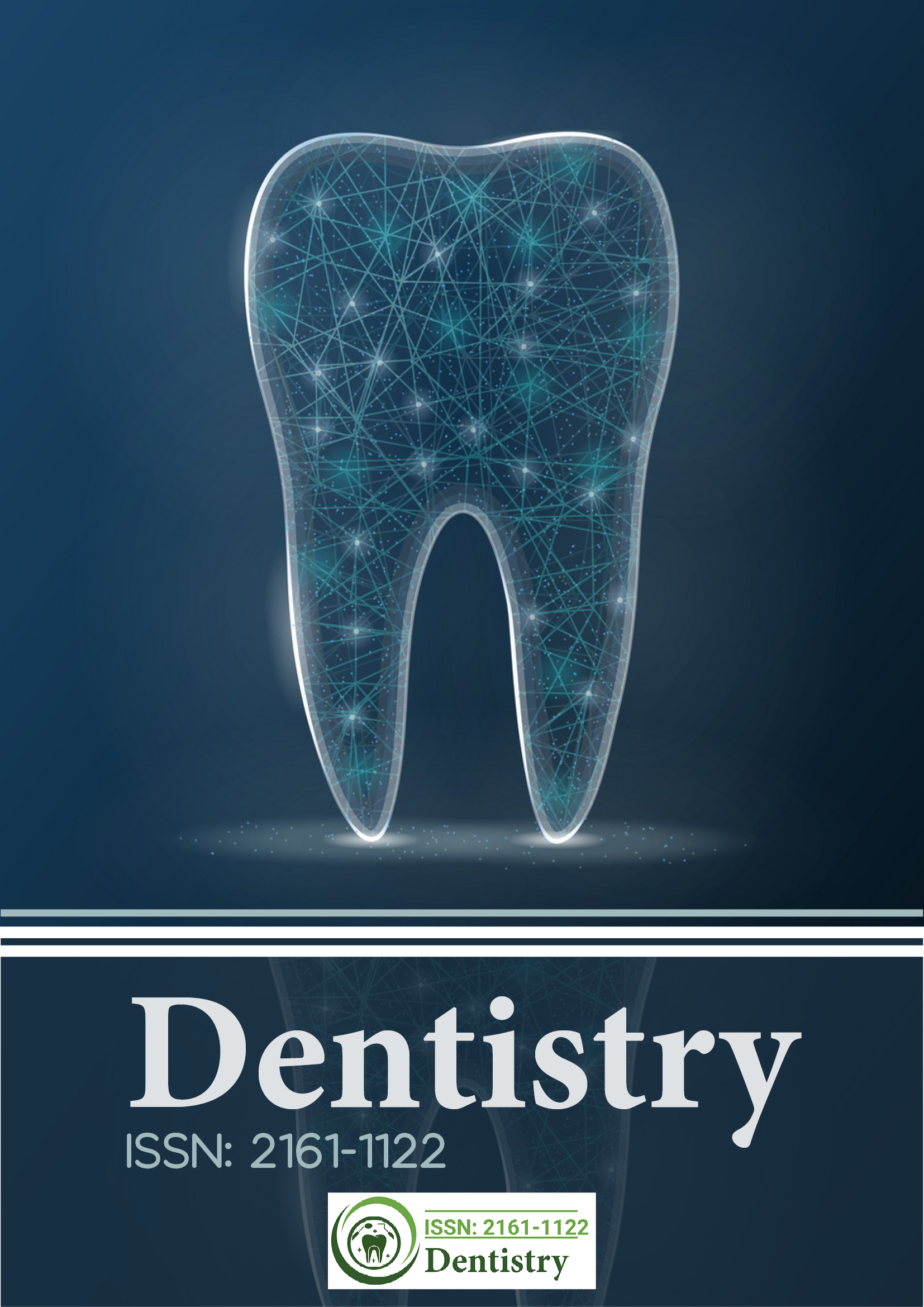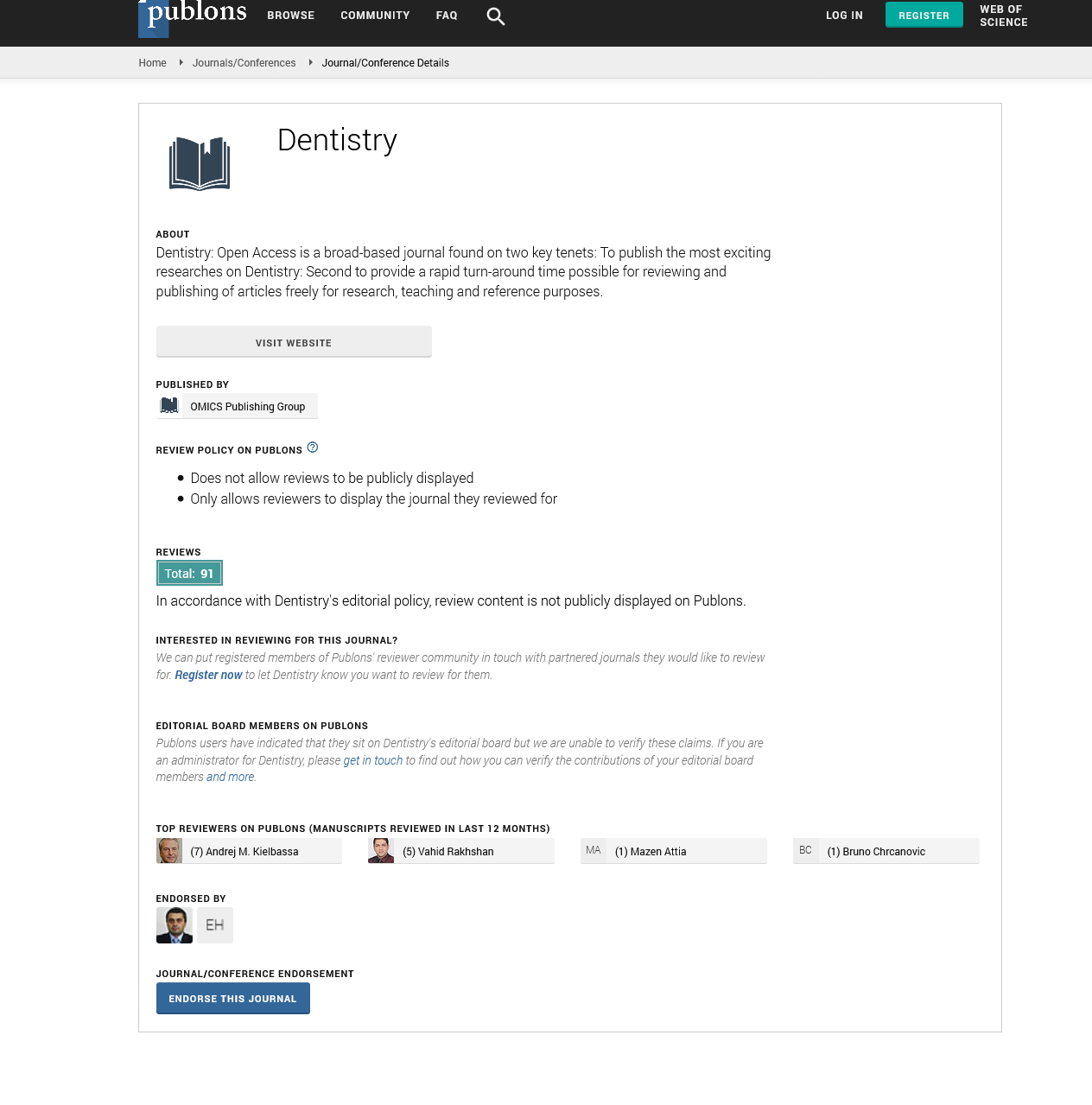Citations : 2345
Dentistry received 2345 citations as per Google Scholar report
Indexed In
- Genamics JournalSeek
- JournalTOCs
- CiteFactor
- Ulrich's Periodicals Directory
- RefSeek
- Hamdard University
- EBSCO A-Z
- Directory of Abstract Indexing for Journals
- OCLC- WorldCat
- Publons
- Geneva Foundation for Medical Education and Research
- Euro Pub
- Google Scholar
Useful Links
Share This Page
Journal Flyer

Open Access Journals
- Agri and Aquaculture
- Biochemistry
- Bioinformatics & Systems Biology
- Business & Management
- Chemistry
- Clinical Sciences
- Engineering
- Food & Nutrition
- General Science
- Genetics & Molecular Biology
- Immunology & Microbiology
- Medical Sciences
- Neuroscience & Psychology
- Nursing & Health Care
- Pharmaceutical Sciences
The effect of diode lasers in dentistry
27th Euro Dentistry Congress
October 25-27, 2018 | Prague, Czech Republic
Mohammed Mohsen Abdelfattah
University of Genova, Italy
Posters & Accepted Abstracts: Dentistry
Abstract:
Lasers are used in soft and hard tissues treatment and can be classified to various types of laser used in treatment like He-Ne (632.5 nm), diode lasers with various wavelengths 810, 940, 980, 1064 nm, Nd: YAG (1064 nm), CO2 (10600, 9600, 9300 nm), Er: YAG (2940 nm) and Er, Cr: YSGG (2780 nm). One of the most dominant lasers that used in dentistry are diode lasers with their different wavelengths. It is important to know the role of diode lasers in dentistry and their dental applications with different wavelengths as treatment of hemangioma by photocoagulation is easier with 980 nm than 810 nm as absorption of haemoglobin in 980 nm is more than in 810. Regarding the photobiomodulation therapy, the main chromophore that used is cytochrome c oxidase, the effect of 810 nm is greater than 980 nm, and it will be more effective in pain relief, wound healing as treatment of aphthous ulcers and herpes simplex. On the other hand, the energy of 445 nm is higher than 635 nm, and it will be more efficiency in cutting the tissue. Dental diode lasers applications are a lot as gingivectomy, oral depigmentation, frenectomy, tongue tie, treatment of dentinal hypersensitivity and bleaching. Otherwise, diode lasers have a great effect in endodontics and periodontology. So, I will assess and appraise the effect of diode lasers in dental applications.
Biography :
E-mail: m_foxa@hotmail.com

